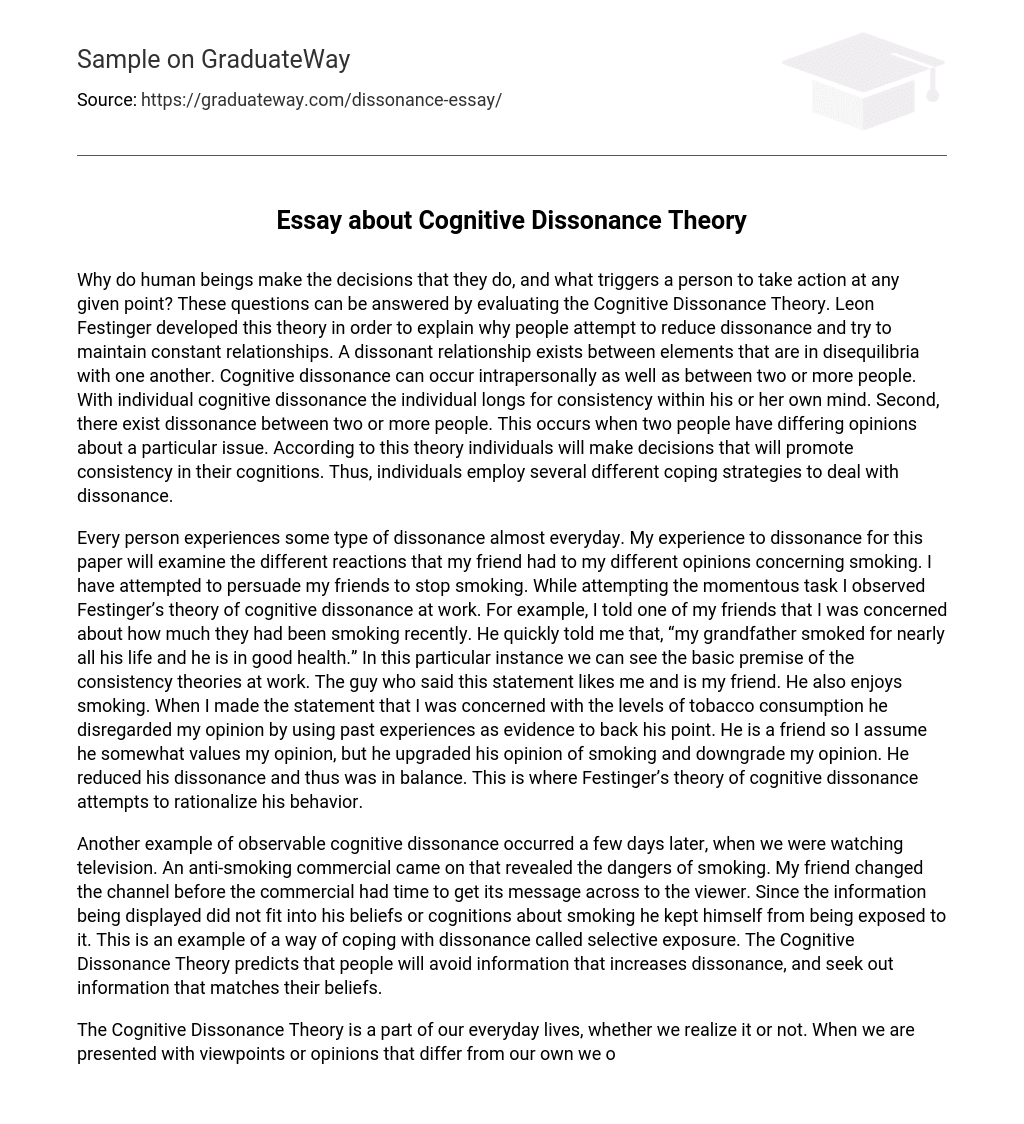The Cognitive Dissonance Theory, developed by Leon Festinger, aims to explain the decision-making process and actions of humans. It seeks to understand how individuals reduce dissonance and maintain consistent relationships. Dissonance can occur when there is an imbalance between different elements within an individual’s mind or between multiple individuals.
When faced with cognitive dissonance, individuals strive for consistency in their thoughts. Similarly, disagreement among two or more individuals on a specific issue can lead to dissonance between them.
According to this theory, individuals tend to make decisions that align with their existing beliefs in order to uphold cognitive consistency. Consequently, they employ various coping strategies to manage the discord.
This paper focuses on my friend’s reactions to my different views on smoking, exploring how cognitive dissonance comes into play. I have been urging my friends to quit smoking and in the process, I observed Festinger’s theory of cognitive dissonance in action. For instance, when I expressed concern about my friend’s recent increase in smoking, he responded by referencing his grandfather who smoked his entire life yet remained healthy. This incident exemplifies the consistency theories at work. Despite our friendship, he dismissed my opinion by using past experiences as support for his own perspective. While valuing my viewpoint to some extent, he ultimately prioritized his belief in smoking. By doing so, he resolved his dissonance and achieved a state of equilibrium. Festinger’s theory of cognitive dissonance aims to provide an explanation for this behavior.
During a television-watching session a few days later, we witnessed another instance of observable cognitive dissonance. A commercial warning against the dangers of smoking was airing, yet my friend promptly changed the channel to avoid absorbing its message effectively. This action showcased a coping mechanism known as selective exposure, wherein individuals evade information that contradicts their existing beliefs or opinions on smoking. By actively seeking out information that aligns with their current convictions, this specific behavior exemplifies the theory of Cognitive Dissonance and its prediction that people will steer clear of dissonant information while searching for supportive evidence.
The Cognitive Dissonance Theory is omnipresent in our daily lives, whether we acknowledge it or not. Encountering diverse viewpoints or opinions often triggers a sense of dissonance within us. As humans, we constantly strive for equilibrium and may sometimes disregard warnings about potential consequences. This illustrates how cognitive dissonance can be employed to evade action, although theories propose that it actually motivates action. Regrettably, smokers frequently remain unaffected by this dissonance and persist in their smoking habits. Through modifications in behavior and attitude, the Cognitive Dissonance Theory elucidates various actions and decisions made by individuals as they endeavor to mitigate dissonance. Consequently, it endures as a valid explanation for communication behaviors.





